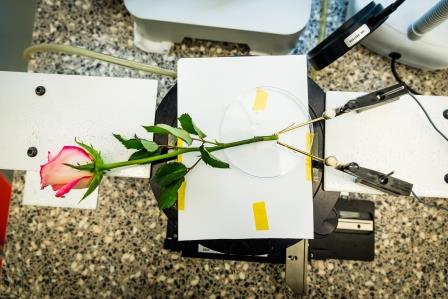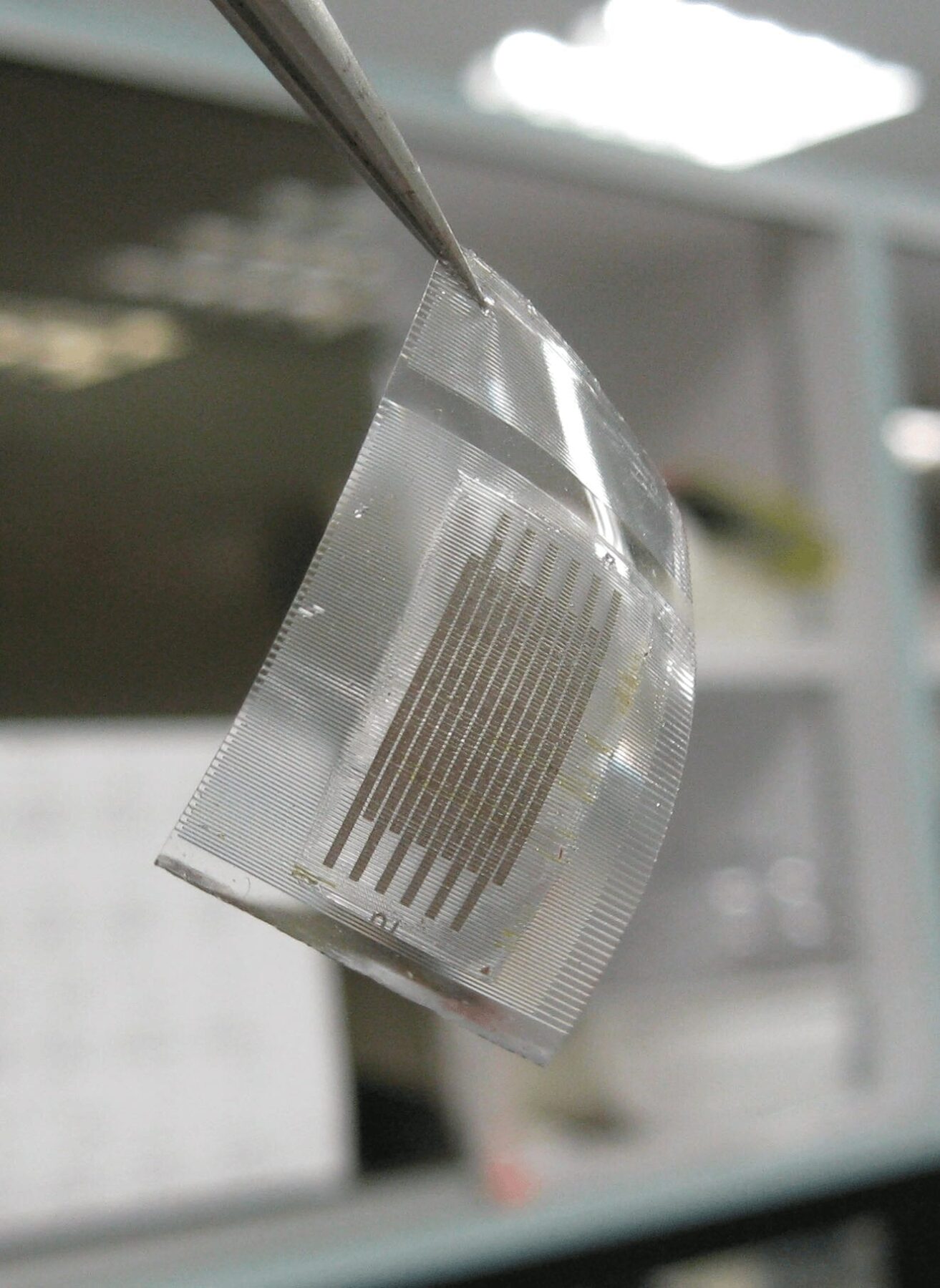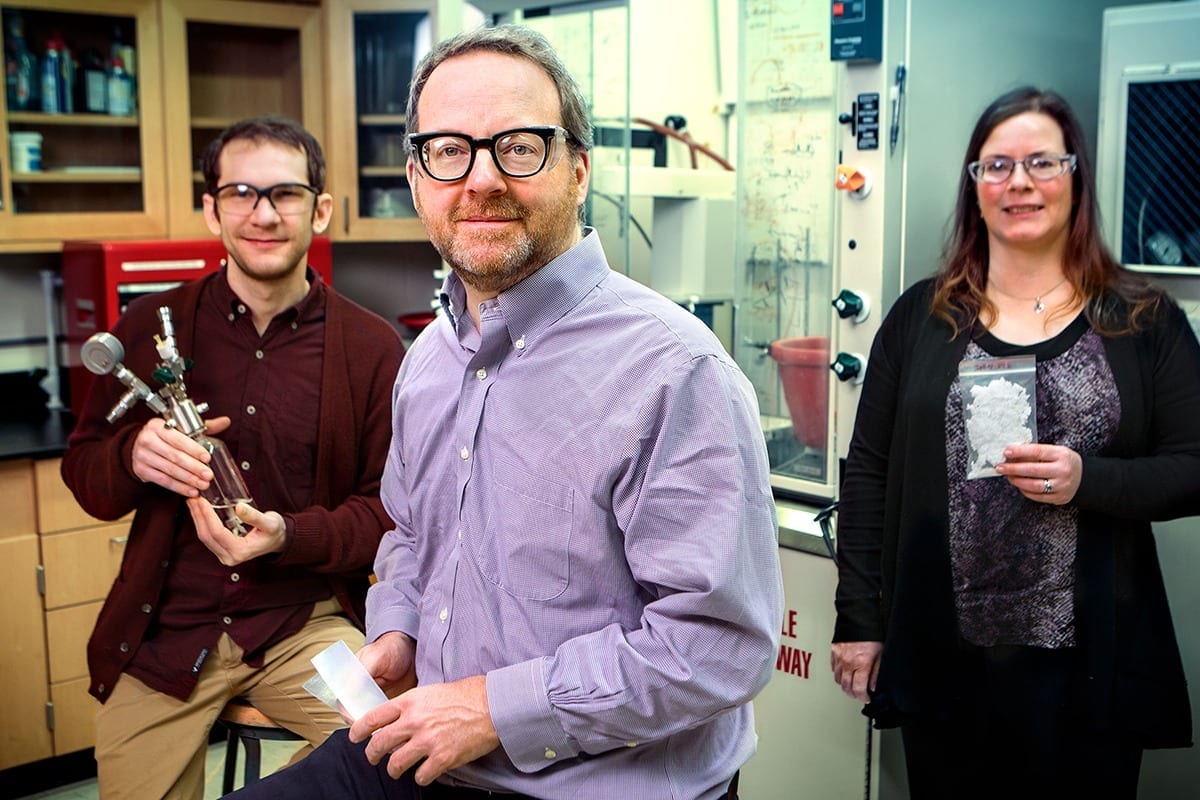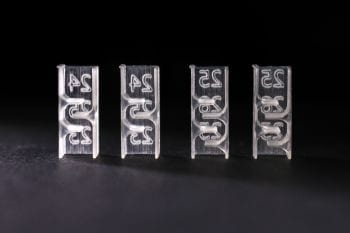
Credit: Thor Balkhed
A special structure for storing energy known as a supercapacitor has been constructed in a plant for the first time. The plant, a rose, can be charged and discharged hundreds of times.
This breakthrough is the result of research at the Laboratory of Organic Electronics at Linköping University.
In November 2015, the research group presented results showing that they had caused roses to absorb a conducting polymer solution. Conducting hydrogel formed in the rose’s stem in the form of wires. With an electrode at each end and a gate in the middle, a fully functional transistor was created. The results were presented in Science Advances and have aroused considerable interest all over the world.
New material
One member of the group, Assistant Professor Roger Gabrielsson, has now developed a material specially designed for this application. The material polymerizes inside the rose without any external trigger. The innate fluid that flows inside the rose contributes to create long, conducting threads, not only in the stem but also throughout the plant, out into the leaves and petals.
“We have been able to charge the rose repeatedly, for hundreds of times without any loss on the performance of the device. The levels of energy storage we have achieved are of the same order of magnitude as those in supercapacitors. The plant can, without any form of optimization of the system, potentially power our ion pump, for example, and various types of sensors,” says Eleni Stavrinidou, Assistant Professor at the Laboratory of Organic Electronics.
The results are now to be published in the prestigious scientific journal Proceedings of the National Academy of Sciences of the United States of America (PNAS).
Excellent performance
“This research is in a very early stage, and what the future will bring is an open question,” says Eleni Stavrinidou.
Some examples are autonomous energy systems, the possibility of harvesting energy from plants to power sensors and various types of switches, and the possibility of creating fuel cells inside plants.
“A few years ago, we demonstrated that it is possible to create electronic plants, ‘power plants’, but we have now shown that the research has practical applications. We have not only shown that energy storage is possible, but also that we can deliver systems with excellent performance,” says Professor Magnus Berggren, head of the Laboratory of Organic Electronics, Linköping University, Campus Norrköping.
Learn more: A rose to store energy
[osd_subscribe categories=’supercapacitor’ placeholder=’Email Address’ button_text=’Subscribe Now for any new posts on the topic “SUPERCAPACITOR”‘]
Receive an email update when we add a new SUPERCAPACITOR article.
The Latest on: Plant supercapacitor
[google_news title=”” keyword=”plant supercapacitor” num_posts=”10″ blurb_length=”0″ show_thumb=”left”]
via Google News
The Latest on: Plant supercapacitor
- CO2 capture projects at Wyoming coal plant receive fundingon April 27, 2024 at 12:26 am
Basin Electric Power Cooperative's coal-fired Dry Fork Station hosts a CCS testing facility which allows CO2 capture technology companies access to the flue gas that would otherwise be released from ...
- Opinion: Alberta’s electricity grid needs energy storage to avoid brownoutson April 26, 2024 at 5:03 am
If we learned anything about Alberta’s electricity grid recently, it’s that our system desperately needs more energy storage.
- The Rise of Natural Polymers: Pioneering Sustainable Material Developmenton April 25, 2024 at 6:42 am
By Taha Khan Apr 25 2024 Reviewed by Lexie Corner Natural polymers are complex molecules composed of long chains of repeating units found in nature. Derived from widely available renewable sources, ...
- EU project HyFlow: Efficient, sustainable and cost-effective hybrid energy storage system for modern power gridson April 25, 2024 at 3:16 am
Over three years of research, the consortium of the EU project HyFlow has successfully developed a highly efficient, sustainable, and cost-effective hybrid energy storage system (HESS) that can meet ...
- Korean researchers are fine-tuning a hybrid sodium-ion batteryon April 23, 2024 at 2:08 am
Developers at the Korea Advanced Institute of Science and Technology (KAIST) have unveiled a promising new type of sodium-ion battery that charges in just a few seconds - and could be used in electric ...
- Energy Storage on O&G Platforms - A Safety Boost, too?on April 19, 2024 at 6:30 am
The fuel savings gained by installing energy storage systems on oil and gas platforms are significant, but it’s the safe-ty ...
- Fast-Tracking Cleantech Patenting In India.on April 11, 2024 at 10:19 pm
Fast-Tracking Cleantech Patenting In India. Legal News and Analysis - India - Energy & Project Finance, Intellectual Property - ...
- This device gathers, stores electricity in remote settingson April 9, 2024 at 2:41 pm
"It's our idea for an integrated device that could harvest ambient thermal energy and convert it directly into stored electrochemical energy in the form of a supercapacitor or ... the condition of ...
via Bing News










